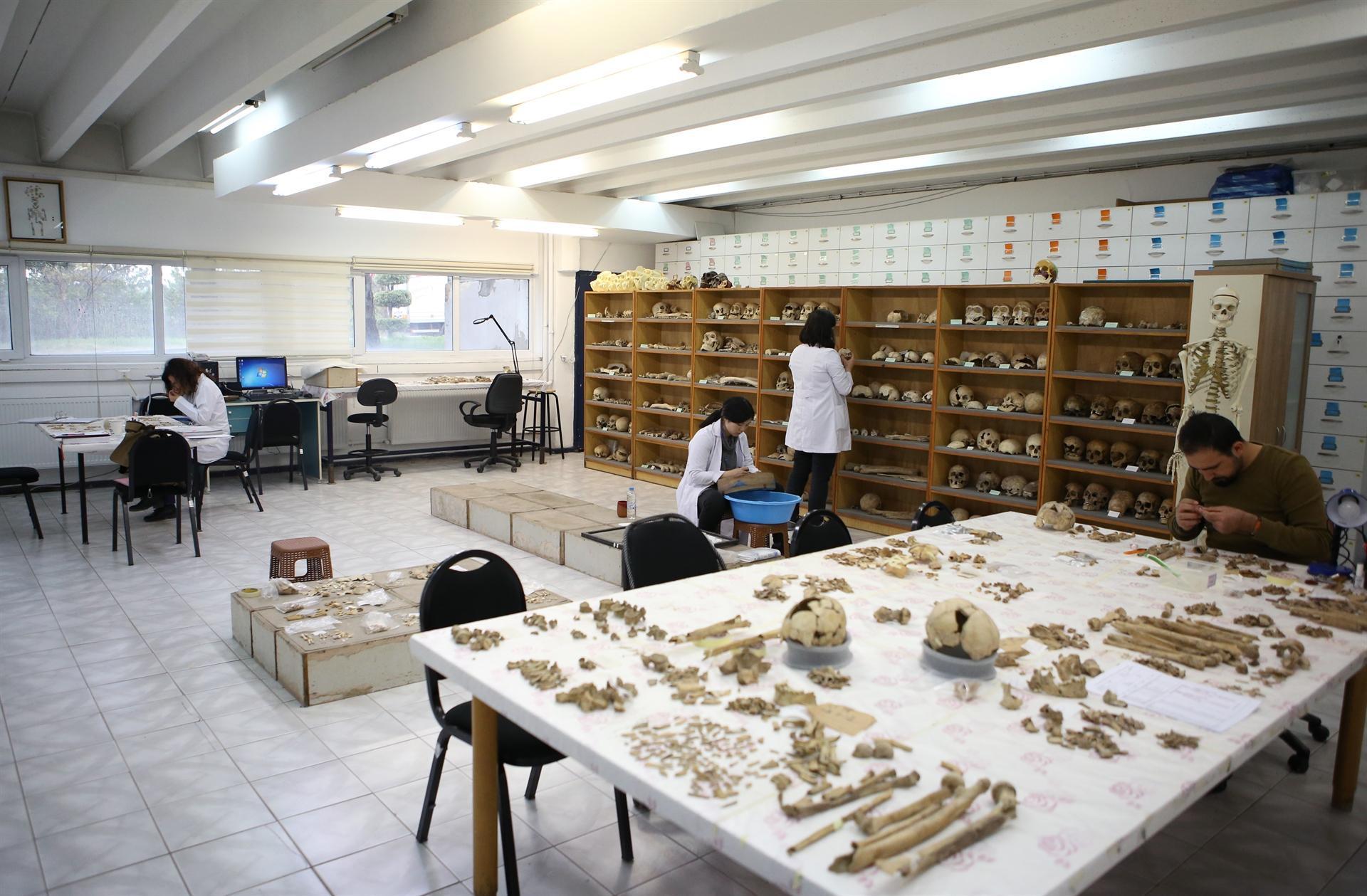Turkey launches first anthropology DNA laboratory
ANKARA

Turkey has launched its first “ancient DNA laboratory” which will conduct scientific research on mummified remains of Anatolian civilizations dating back 10,000-15,000 years.
The molecular anthropology laboratory at Hacettepe University (HU) in Turkey’s capital Ankara will examine hereditary and bacterial diseases of ancient humans and animals.
The head of HU’s anthropology department, Professor Yılmaz Selim Erdal, told the state-run Anadolu Agency that all living creatures’ deoxyribonucleic acid, which we know as DNA, are important building blocks of life that contain hereditary information to be transferred to the next generation, adding that the DNA structure is different for every species.
Erdal said that Hacettepe University Skeletal Biology Laboratory in the anthropology department is among the most important laboratories in the world with about 12,000 human skeletons included in the collection from each region of Turkey since the 1990s.
He said that the “DNA’s new sequencing” studies carried out over the last 10 years provides a better reading of the DNAs of the ancient societies.
The HU Molecular Anthropology Laboratory (Ancient DNA Laboratory – HUMAN_G) will be the first of its kind in Turkey, he added.
Stating that the laboratory building was specially designed to provide good protection to the DNA of the genetic treasure, Erdal said that DNA analysis in ancient ruins can only be done in special DNA laboratories because of contamination of living organisms such as bacteria, fungi and yeast into bones.
“The number of centers capable of doing this kind of research in the world is very low. For this reason, having this laboratory in our country is very important to uncover the hidden DNA treasure of Anatolia,” he added.
[HH] Mummified human remains to be analyzed
Erdal said that the laboratory will first focus on the ossified or mummified remains of people who lived in the past with the help of DNA analyses using the latest technology.
The broken skeletons and remains, obtained during the anthropological excavations, are unified as much as possible after a special cleaning. By using the latest technology DNA sequencing method in the laboratory, the laboratory will be able to determine the bone to be investigated.
Then, by extracting the powder from this bone, Erdal and his colleagues can reach the DNA after chemical treatment. After this stage, they can analyze the scientific data by DNA sequencing.
Erdal emphasized that they will reach the DNA of the cells that are buried in the skeleton remains and the genetic structures of individuals and communities will be illuminated.
“This way, 10,-15,000-year-old human communities and civilizations in Anatolia and the surrounding areas, as well as their history, their relations with each other, migrations, and the ways of cultural propagation, the birth, spread and fall of civilizations will be illuminated by DNA analysis,” he added.
In the laboratory, the periods of Neolithic, Chalcolithic, Bronze Age, Hittites, Phrygians and Byzantines will be examined, said Erdal.
And questions such as “were Hittites natives or foreigners of Anatolia?” or “what was the genetic impact of the Phrygians on human societies in Anatolia?” will be solved by genetic studies along with the effects of Turks’ entry into Anatolia will be discussed.
“We will confirm the information, obtained by the archaeological data, with DNA studies and reveal the unknown aspects of history.”
[HH] Hereditary and bacterial diseases to be examined
These studies will not be limited to Turkey, but also to analyses of the world’s different communities, particularly in Turkey’s neighboring countries.
“Hereditary and bacterial diseases will also be examined along with animals,“ Erdal said, adding that after the opening of the lab, the first publication will be made roughly after a year.
The work to be carried out in the Ancient DNA Laboratory will have an interdisciplinary nature, where many scientists will work together including anthropologists, archaeologists, historians, biologists, geneticists, doctors, dentists, pharmacists, statisticians and computer engineers.
“The laboratory will be an international center of attraction in cooperation with foreign centers specialized in the field. This laboratory will increase the power of our country in the production of information that will turn into international publications and increase the visibility of our country in the international community,” said Erdal.
















